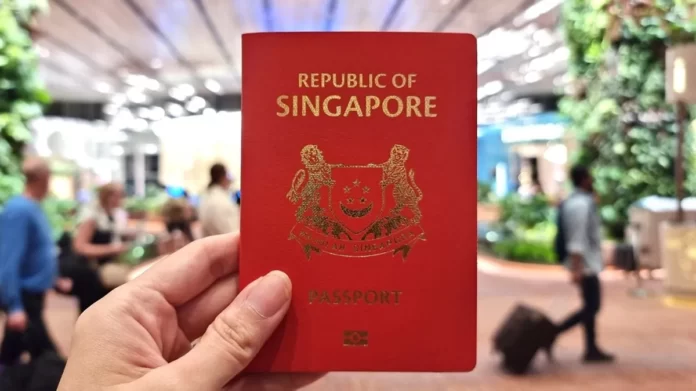Singapore has taken a significant step towards simplifying travel procedures for visitors entering the country by introducing a QR code system at two land checkpoints. This innovative approach aims to streamline the border crossing process, reducing the reliance on traditional passport checks and minimizing travel hassles for both locals and tourists.
Under this new system, individuals crossing into Singapore via two designated land checkpoints can now use a QR code instead of presenting their physical passports. The implementation of this technology marks a significant shift towards digitalization in immigration procedures, aligning with Singapore’s vision of becoming a smart nation.
The QR code system is designed to enhance efficiency and convenience at border crossings while maintaining robust security measures. Travelers can generate their unique QR codes through the government’s official mobile application or website before their journey. Upon arrival at the checkpoint, they simply need to scan the QR code using designated readers installed at the immigration counters.
This streamlined process eliminates the need for manual passport verification, reducing waiting times and expediting the entry process. Additionally, it minimizes the risk of human error associated with traditional document checks, enhancing overall security and accuracy at the border.
The introduction of the QR code system reflects Singapore’s commitment to leveraging technology to improve the travel experience for visitors and residents alike. By embracing digital innovations, the country aims to create a seamless and efficient border control framework that meets the evolving needs of the modern traveler.
Furthermore, this initiative aligns with Singapore’s broader efforts to promote sustainable tourism and enhance its reputation as a global travel hub. By offering hassle-free entry procedures, the country seeks to attract more visitors and boost its tourism industry, contributing to economic growth and development.
The implementation of the QR code system underscores Singapore’s proactive approach to embracing digital transformation across various sectors. As technology continues to advance rapidly, the country remains at the forefront of innovation, continually exploring new ways to enhance efficiency, security, and convenience for travelers.
Moreover, the QR code system serves as a testament to Singapore’s reputation as a forward-thinking nation that prioritizes innovation and excellence in all aspects of governance and public services. By adopting cutting-edge solutions like the QR code system, Singapore demonstrates its commitment to staying ahead of the curve and providing world-class experiences for visitors.
Singapore’s Getting Fast Forwarded
Singapore’s decision to implement the QR code system also reflects its proactive response to the challenges posed by the COVID-19 pandemic. By reducing physical contact and minimizing the handling of documents, the QR code system helps mitigate the risk of virus transmission at border checkpoints. This move aligns with Singapore’s broader public health strategy aimed at safeguarding the well-being of its residents and visitors while ensuring the continuity of essential services and economic activities.
Furthermore, the adoption of digital solutions like the QR code system is part of Singapore’s broader digital transformation agenda. As a global leader in innovation and technology, Singapore recognizes the transformative potential of digitalization across various sectors, including transportation, healthcare, and finance. By embracing digital innovations, the country aims to enhance efficiency, productivity, and competitiveness, positioning itself as a hub for digital innovation and entrepreneurship in the region.
The introduction of the QR code system also underscores Singapore’s commitment to sustainable development and environmental conservation. By digitizing travel procedures and reducing reliance on paper-based documentation, the country contributes to efforts to reduce paper waste and minimize its carbon footprint. This eco-friendly approach aligns with Singapore’s efforts to build a greener and more sustainable future for generations to come.
Moreover, the QR code system is expected to enhance the overall visitor experience in Singapore, making travel more seamless and convenient. With faster and more efficient border crossings, travelers can spend less time on administrative procedures and more time exploring the vibrant culture, attractions, and culinary delights that Singapore has to offer. This improved travel experience is likely to boost Singapore’s appeal as a tourist destination and drive tourism revenue, benefiting the local economy and supporting job creation in the hospitality and tourism sectors.
Singapore’s introduction of the QR code system for border crossings represents a significant step forward in its journey towards digital transformation and innovation. By leveraging technology to enhance efficiency, convenience, and safety at its land checkpoints, Singapore demonstrates its commitment to providing world-class services and experiences for travelers. As the country continues to embrace digitalization, it remains poised to lead the way in shaping the future of travel and tourism in the digital age.

